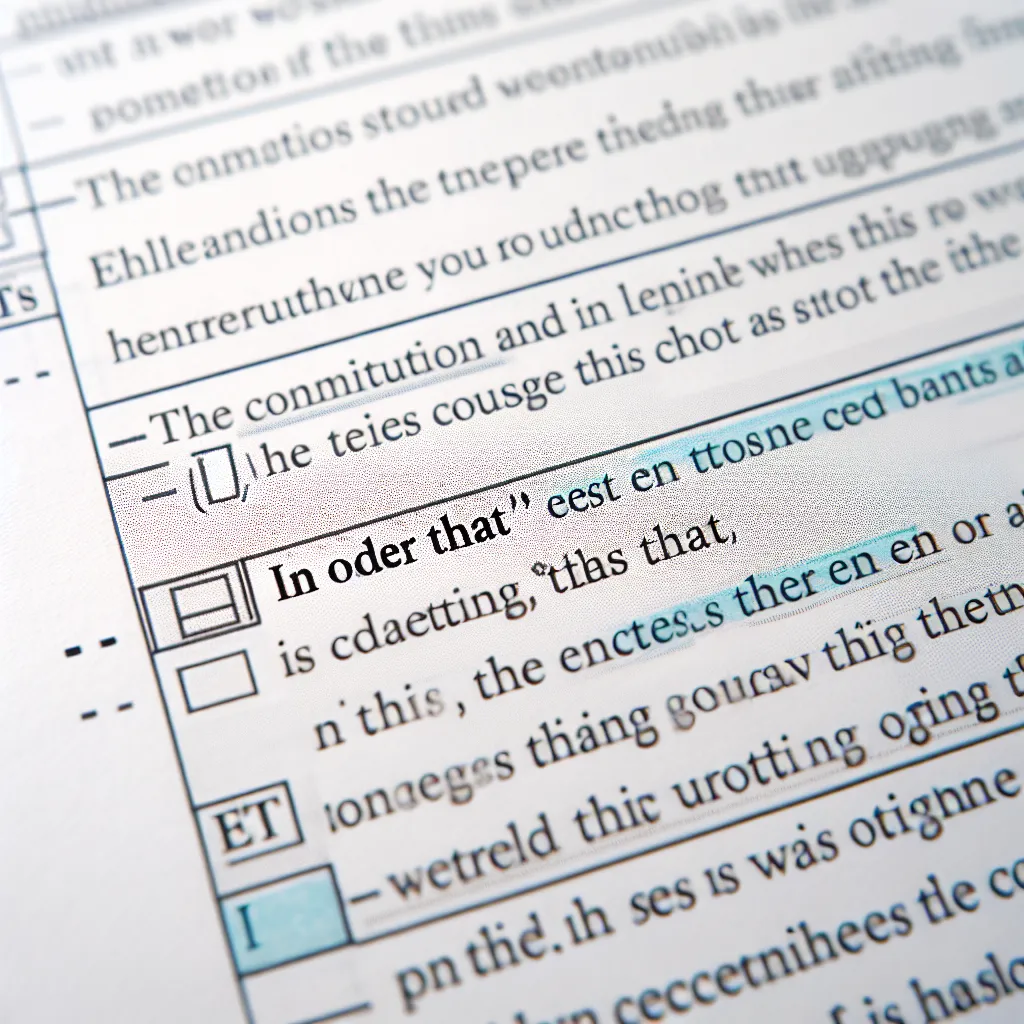“In order that” is a useful grammatical structure that can help you express purpose in a more formal and sophisticated way in your IELTS essays and speaking responses. Understanding how to use this phrase correctly can significantly enhance your language proficiency and potentially boost your IELTS scores. Let’s explore the usage of “in order that” and how you can incorporate it into your IELTS preparation.
Understanding “In Order That”
“In order that” is a conjunction used to introduce a purpose clause. It is synonymous with “so that” but is considered more formal, making it particularly suitable for academic writing and formal speaking contexts like the IELTS exam.
Examples:
- The government invested in public transportation in order that traffic congestion could be reduced.
- The company implemented new training programs in order that employee productivity would improve.
- Scientists are conducting extensive research in order that we may better understand climate change.
In these examples, “in order that” introduces the purpose or intended outcome of the action mentioned in the main clause.

Grammar and Structure
The basic structure for using “in order that” is:
Main clause + in order that + subject + modal verb (may, might, can, could, would, should) + verb
It’s important to note that “in order that” is typically followed by a clause containing a modal verb. This helps to convey the sense of possibility or intention.
Examples:
4. The university offers scholarships in order that more students may have access to higher education.
5. The company expanded its online presence in order that it could reach a global audience.
6. The government implemented stricter regulations in order that air quality would improve in major cities.
Using “In Order That” in IELTS Writing
Incorporating “in order that” into your IELTS Writing Task 2 essays can demonstrate a high level of grammatical knowledge and formal language use. Here’s an example paragraph:
“Governments worldwide are investing heavily in renewable energy sources in order that they may reduce their dependence on fossil fuels. This shift in energy policy is crucial in order that countries can meet their carbon emission targets and mitigate the effects of climate change. Moreover, educational institutions are updating their curricula in order that future generations would be better equipped to address environmental challenges.”
This paragraph showcases the use of “in order that” in different contexts, demonstrating purpose and intended outcomes related to environmental policies and education.
“In Order That” in IELTS Speaking
While “in order that” is more common in writing, you can also use it in the IELTS Speaking test to impress the examiner with your range of vocabulary and structures. Here’s an example response to a question about the importance of learning foreign languages:
“I believe learning foreign languages is crucial in order that people can communicate effectively in our globalized world. Many companies now require bilingual employees in order that they may expand into international markets. Additionally, schools are emphasizing language education in order that students would have better career prospects in the future.”
Alternatives and Variations
While “in order that” is a valuable structure, it’s important to show variety in your language use. Here are some alternatives with similar meanings:
- So that
- In order to
- With the aim of
- For the purpose of
- With a view to
Example:
7. The company implemented flexible working hours in order that employees could achieve a better work-life balance.
Alternative: The company implemented flexible working hours so that employees could achieve a better work-life balance.
Common Mistakes to Avoid
When using “in order that,” be careful to avoid these common errors:
-
Omitting the modal verb:
Incorrect: The teacher explained the concept slowly in order that students understand it.
Correct: The teacher explained the concept slowly in order that students would understand it. -
Using it with an infinitive:
Incorrect: They studied hard in order that to pass the exam.
Correct: They studied hard in order that they might pass the exam. -
Overusing the structure:
While “in order that” can enhance your writing, using it too frequently can make your essay sound repetitive. Aim for a balance and variety in your sentence structures.
Conclusion
Mastering the use of “in order that” can significantly enhance your IELTS performance, particularly in Writing Task 2 and the Speaking test. By incorporating this structure alongside other advanced grammatical forms, you can demonstrate a high level of English proficiency. Remember to practice using it in various contexts and to balance it with other ways of expressing purpose. As you prepare for your IELTS exam, consider creating practice essays and speaking responses that incorporate “in order that” to become more comfortable with its usage.